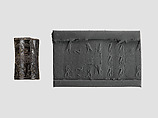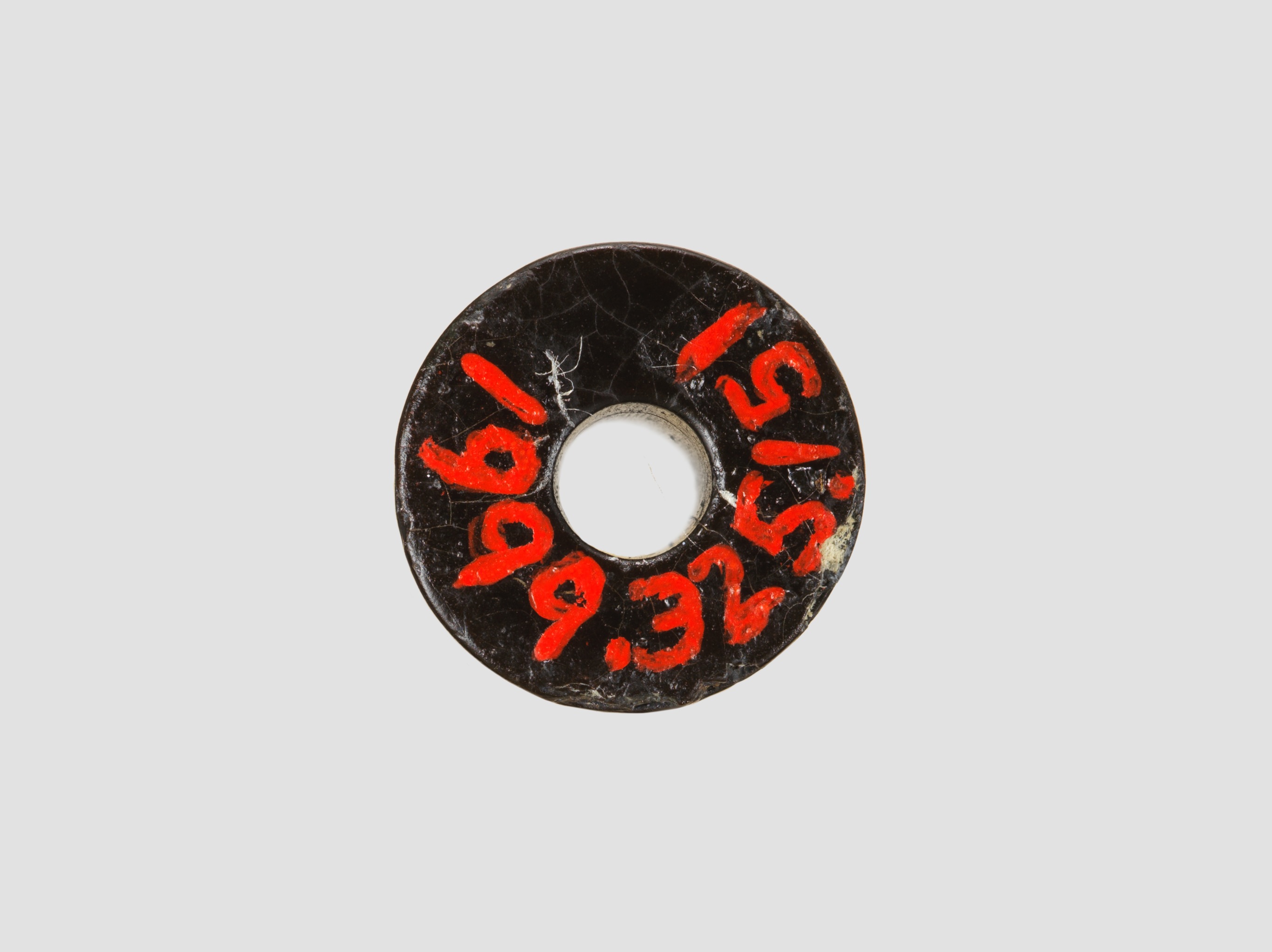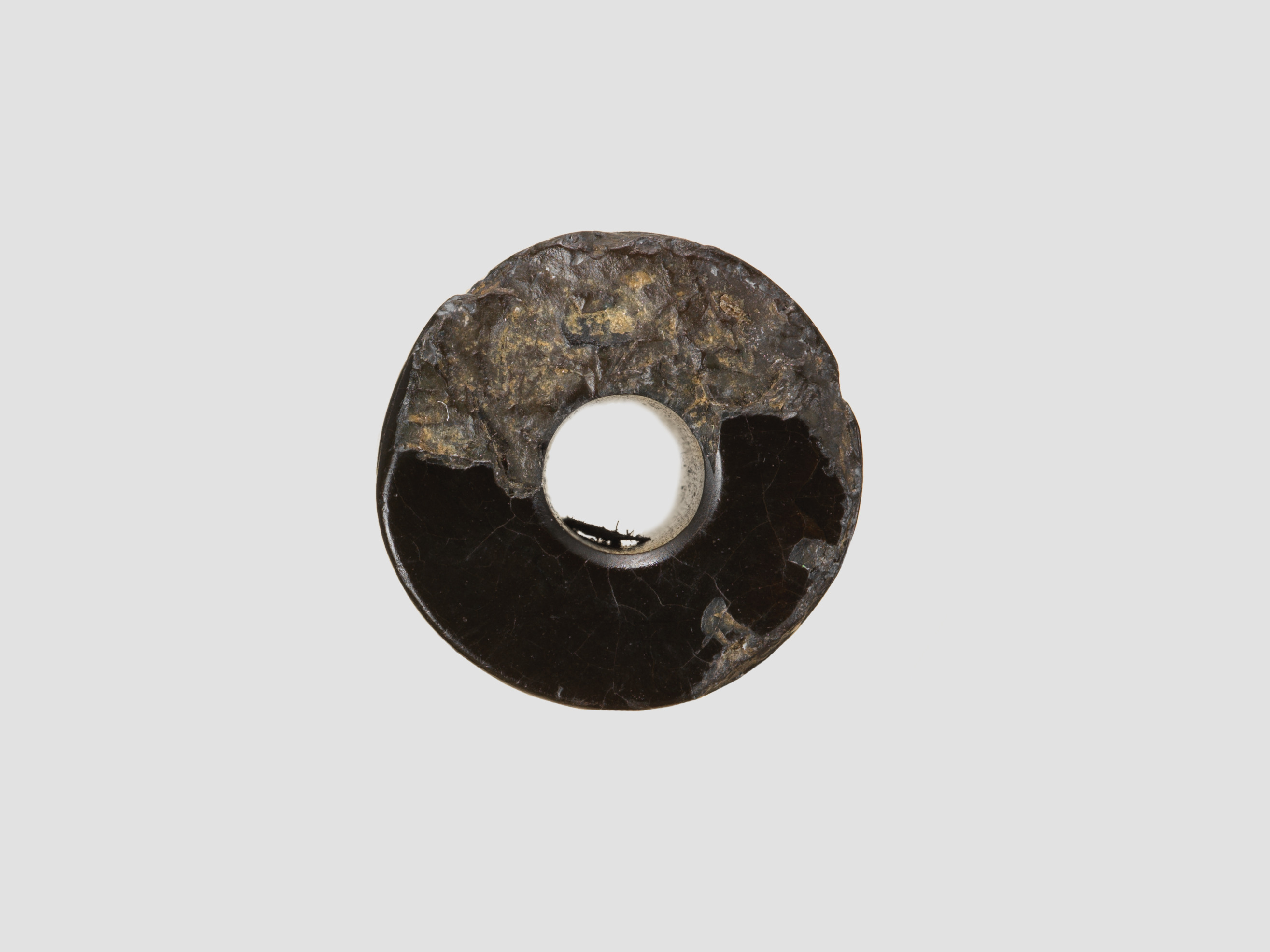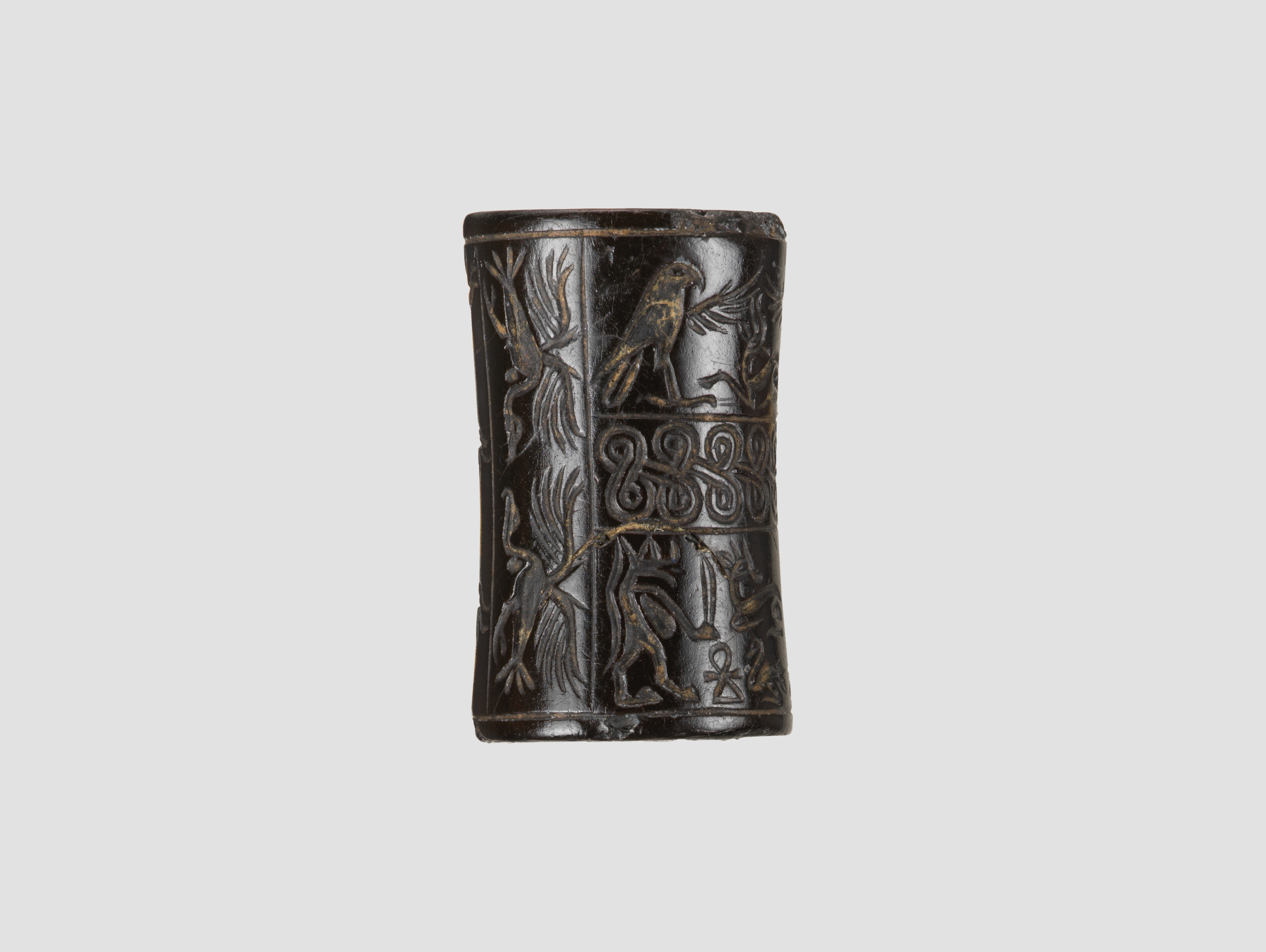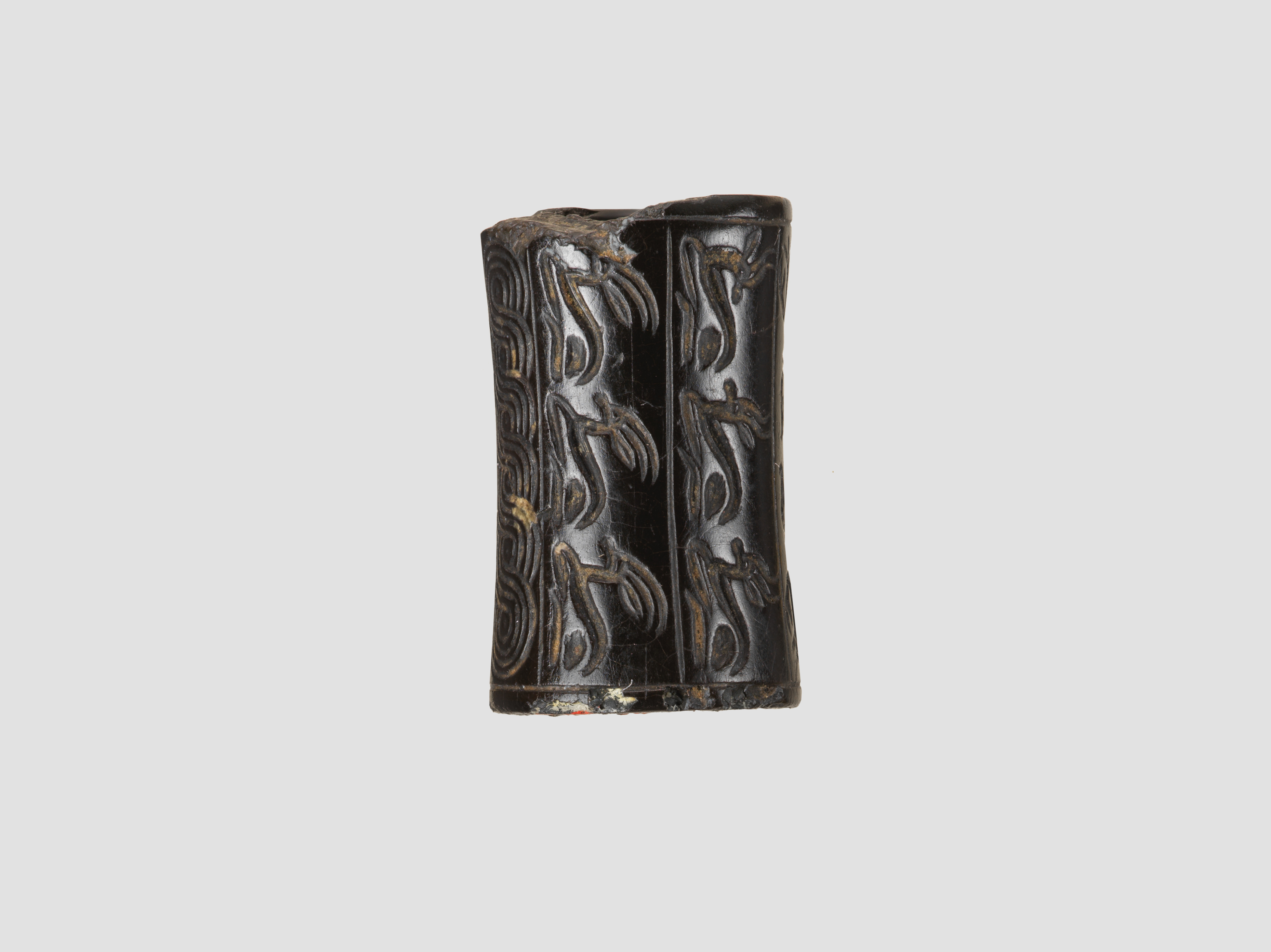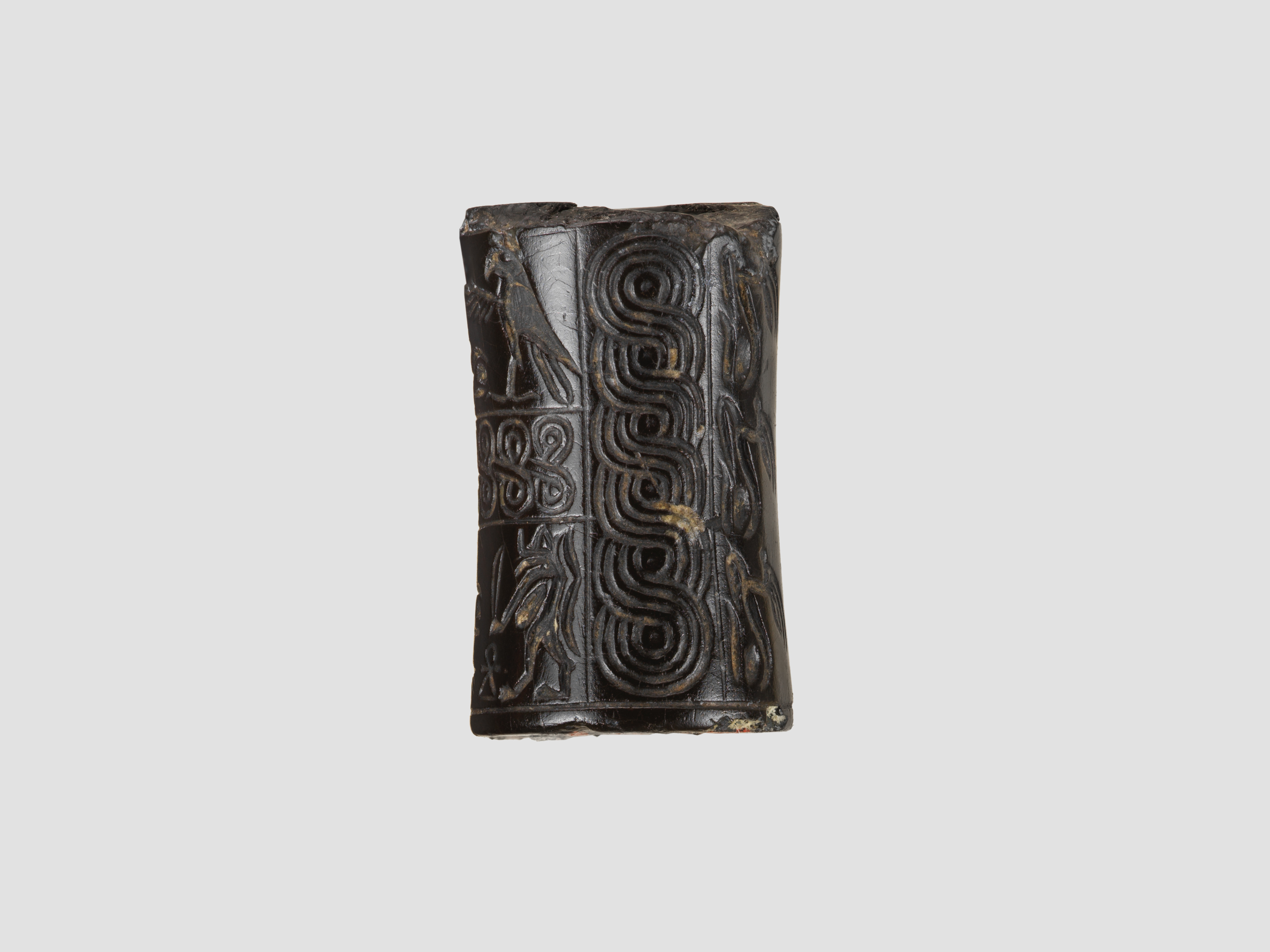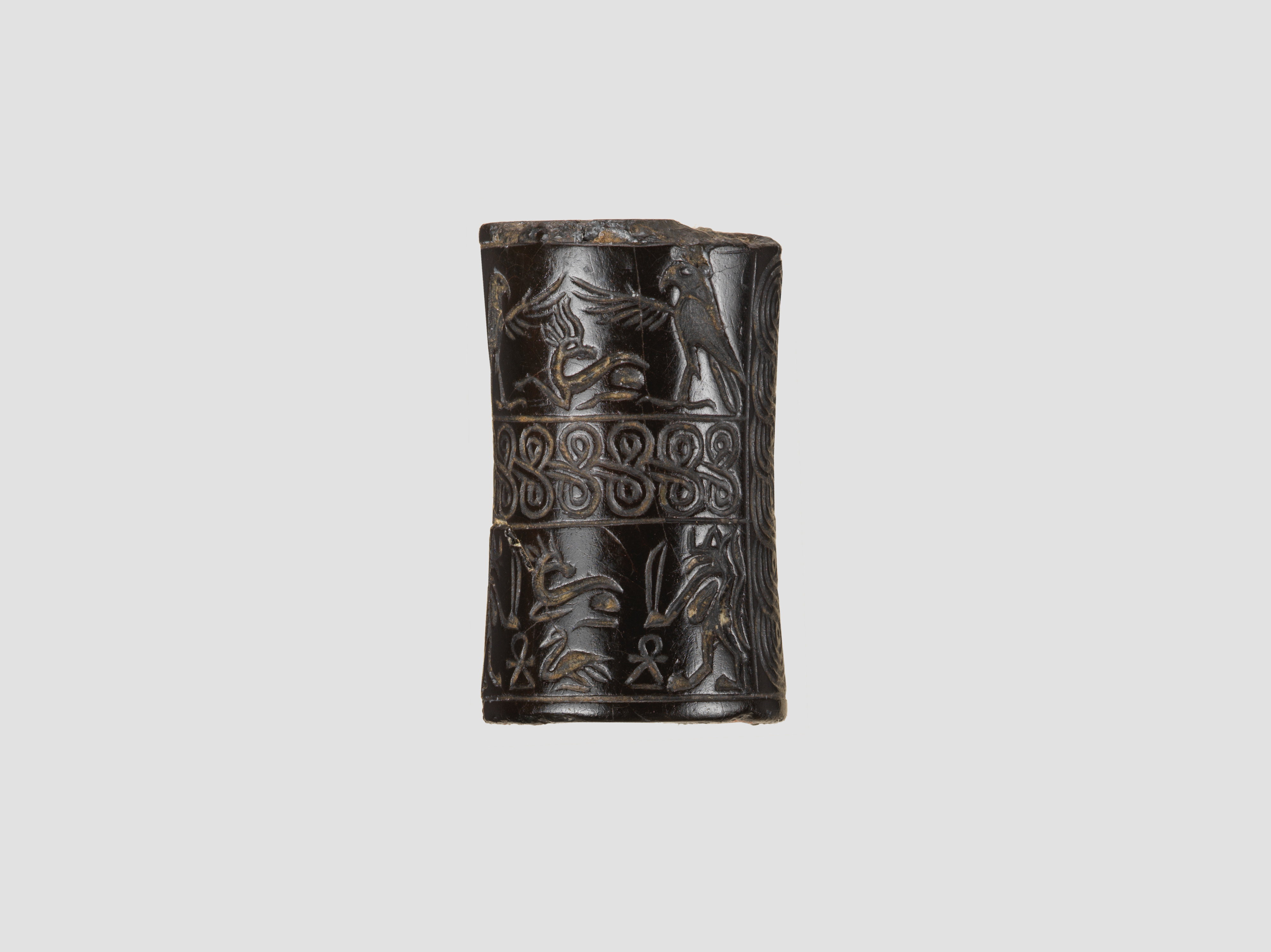Cylinder seal and modern impression: rows of animals; falcons flanking goat, Taweret goddesses
Not on view
Although engraved stones had been used as early as the seventh millennium B.C. to stamp impressions in clay, the invention in the fourth millennium B.C. of carved cylinders that could be rolled over clay allowed the development of more complex seal designs. These cylinder seals, first used in Mesopotamia, served as a mark of ownership or identification. Seals were either impressed on lumps of clay that were used to close jars, doors, and baskets, or they were rolled onto clay tablets that recorded information about commercial or legal transactions. The seals were often made of precious stones. Protective properties may have been ascribed to both the material itself and the carved designs. Seals are important to the study of ancient Near Eastern art because many examples survive from every period and can, therefore, help to define chronological phases. Often preserving imagery no longer extant in any other medium, they serve as a visual chronicle of style and iconography.
The modern impression of the seal is shown so that the entire design can be seen. The imagery on this seal is divided into a number of horizontal and vertical registers. To the right of a vertical guilloche band the imagery is divided into two registers by a horizontal guilloche band. In the upper register, two confronted falcons each extend a wing over a recumbent horned animal. In the lower register, two confronted figures, perhaps of the Egyptian goddess Taweret, hold knives above two ankh symbols, which flank a recumbent horned animal above a duck. To the right of this scene are three vertical columns with figures at right angles to the scene. In the first are a pair of confronted flying vultures. In the second and third, three recumbent horned animals are depicted.
This image cannot be enlarged, viewed at full screen, or downloaded.
This artwork is meant to be viewed from right to left. Scroll left to view more.
